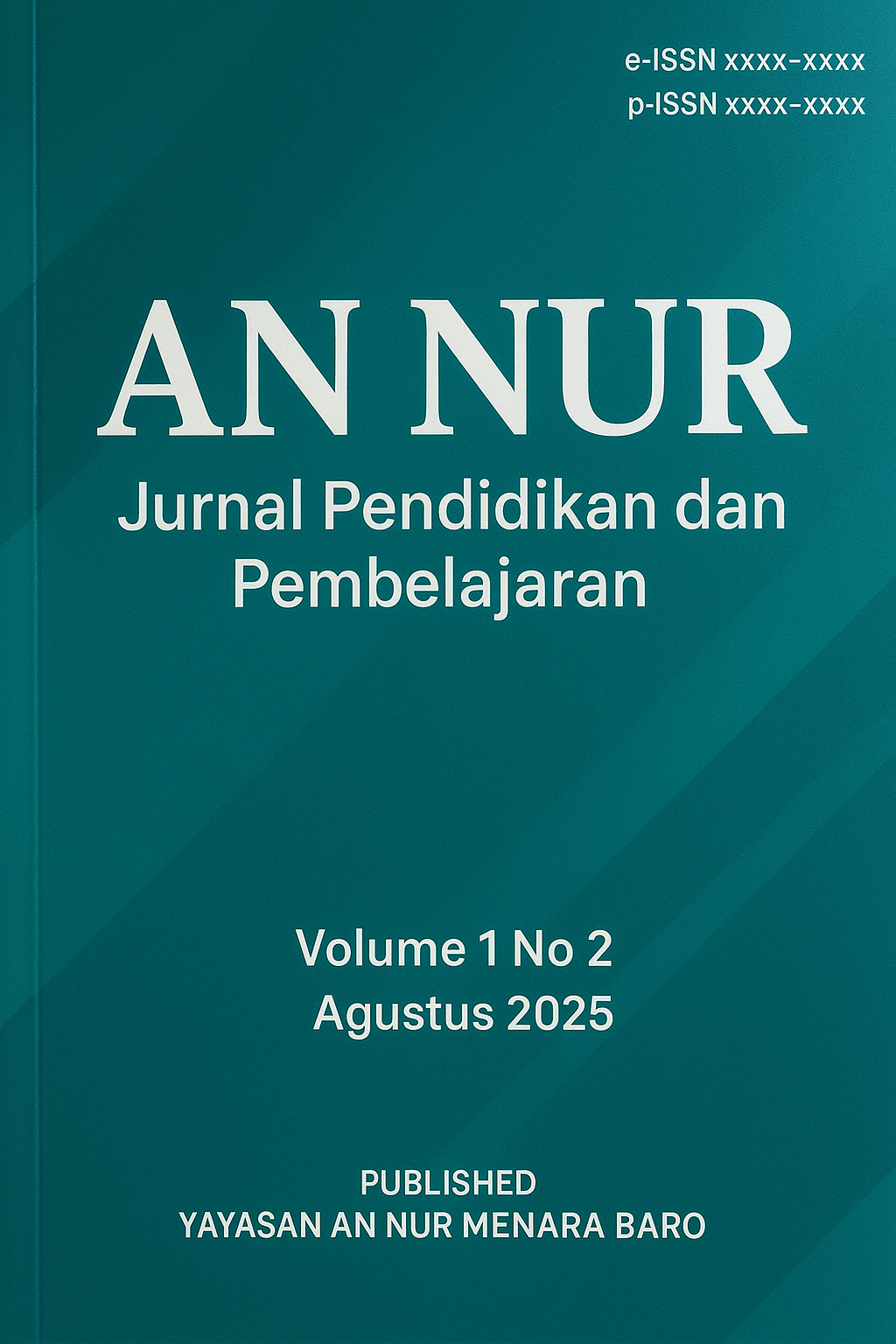MEMBEBASKAN RUANG KELAS PAI DARI KEKERASAN SIMBOLIK MELALUI PENDEKATAN HUMANISTIK
Keywords:
symbolic violence, Islamic Religious Education, humanistic approach, Islamic pedagogy, classroomAbstract
Symbolic violence in Islamic Religious Education (PAI) classrooms is a subtle yet systemic form of domination, manifested through judgmental language, asymmetrical power relations between teachers and students, and the imposition of obedience without critical space. This situation weakens students’ religious reasoning and diminishes reflective spiritual awareness. This article emphasizes the urgency of adopting a humanistic approach in Islamic education, which upholds compassion, dialogue, and respect for individual potential as pedagogical foundations. The study aims to identify the forms of symbolic violence in PAI learning and explain how a humanistic approach can liberate classrooms from such domination. Using a qualitative-descriptive method, data were collected through classroom observations and interviews with teachers and students at a public junior high school in Banda Aceh, followed by thematic analysis. The findings reveal that symbolic violence persists in PAI teaching practices, yet a more humanistic strategy encourages dialogue, empathy, and critical awareness among students. The theoretical contribution of this paper lies in broadening the discourse of Islamic pedagogy toward symbolic liberation, while its practical significance offers recommendations for curriculum reform and teacher training based on humanistic ethics.
References
Al-Attas, S. M. N. (1995). Prolegomena to the Metaphysics of Islam: An Exposition of the Fundamental Elements of the Worldview of Islam. International Institute of Islamic Thought and Civilization.
Bourdieu, P., & Passeron, J. C. (1990). Reproduction in Education, Society and Culture. London: Sage. https://doi.org/10.4135/9781446211269
Bourdieu, P., & Passeron, J.-C. (1990). Reproduction in Education, Society and Culture (2nd ed.). London: Sage Publications.
Freire, P. (2005). Pedagogy of the Oppressed. Continuum.
Hasan, S. (2022). Transformasi Pendidikan Islam dan Tantangan Globalisasi: Kajian Humanisasi Kurikulum PAI. Tarbiyatuna: Jurnal Pendidikan Islam, 16(1), 1–18. https://doi.org/10.21043/tarbiyatuna.v16i1.14873
Hidayatullah, S. (2021). Humanisme dalam Pendidikan Islam: Relevansi Konsep Paulo Freire dengan Prinsip Tarbiyah. Jurnal Tarbiyah Islamiyah, 5(2), 99–110. https://doi.org/10.25077/tarbiyah.5.2.99-110.2021
Junaidi, A. (2020). Pendidikan Islam Humanistik sebagai Upaya Menumbuhkan Toleransi Keagamaan Siswa. Jurnal Pendidikan Islam, 6(2), 123–138. https://doi.org/10.21043/jpi.v6i2.8842
Mariati, M., & Silahuddin, S. (2024). The Role of Assistant Teachers in Realizing Boarding Schools That are Free From Bullying. Jurnal Ilmiah Teunuleh, 5(4), 187-195.
Mudzakkir, M. (2023). Diskursus Kekerasan Simbolik dalam Praktik Pendidikan Agama. Jurnal Edukasi Islami, 12(2), 45–61. https://doi.org/10.24235/edukasi.v12i2.9987
Nasution, A. (2022). Paradigma Humanistik dalam Kurikulum Pendidikan Agama Islam: Pendekatan Alternatif Menuju Pendidikan yang Membebaskan. Jurnal Pendidikan Islam Nusantara, 4(1), 55–68. https://doi.org/10.31219/osf.io/xq7jf
Nurmila, A. S., & Ariani, S. (2025). IMPLEMENTASI MEDIA PEMBELAJARAN DALAM PERSPEKTIF HADIS.
Rahman, A., & Zainuddin, M. (2023). Dogmatisme dalam Pengajaran Agama: Sebuah Ancaman terhadap Nalar Kritis Siswa. Al-Tarbiyah: Jurnal Pendidikan Islam, 9(1), 25–40. https://doi.org/10.24042/atjpi.v9i1.5678
Rahman, F. (1982). Islam and Modernity: Transformation of an Intellectual Tradition. University of Chicago Press. https://doi.org/10.7208/chicago/9780226222654.001.0001
Ramadan, T. (2004). Western Muslims and the Future of Islam. Oxford University Press. https://doi.org/10.1093/acprof:oso/9780195183566.001.0001
Rohman, A. (2019). Pendidikan Agama Islam Berbasis Humanisme di Sekolah. Jurnal Pendidikan Islam, 8(1), 45–60. https://doi.org/10.14421/jpi.2019.81.45-60
Syafi’i, M. (2017). Pendidikan Islam sebagai Proyek Humanisasi: Kajian Teoritis atas Urgensi Pembaruan Kurikulum. At-Ta’dib: Jurnal Ilmu Pendidikan, 12(1), 11–28. https://doi.org/10.21111/at-tadib.v12i1.1359
Yulianti, R. (2023). Strategi Guru dalam Membangun Relasi Positif dengan Siswa: Pendekatan Humanistik dalam Pendidikan Agama. Jurnal Ilmiah Pendidikan Karakter, 6(2), 98–112. https://doi.org/10.21831/jipk.v6i2.11038
Yusuf, M. (2017). Humanisme dalam Al-Qur’an: Kajian atas QS. Ali Imran: 159. Jakarta: Pustaka Alvabet.
Zamroni, M. (2019). Pendidikan Agama dan Reproduksi Kekuasaan Simbolik: Telaah Kritis Terhadap Relasi Guru dan Murid. Jurnal Pemikiran Islam dan Pendidikan, 9(1), 89–104. https://doi.org/10.18326/jpip.v9i1.89
Zamroni, Z. (2011). Pendidikan Demokratis: Pendidikan yang Memanusiakan Manusia. Yogyakarta: Genta Press.
Zarkasyi, H. F. (2021). Islamic Pedagogy and the Risk of Symbolic Violence in Religious Instruction. Tafkir: Interdisciplinary Journal of Islamic Education, 2(1), 45–62. https://doi.org/10.29300/tf.v2i1.4781
Downloads
Published
How to Cite
Issue
Section
License
Copyright (c) 2025 Nadia Amanda

This work is licensed under a Creative Commons Attribution-ShareAlike 4.0 International License.















